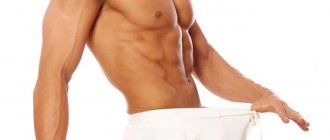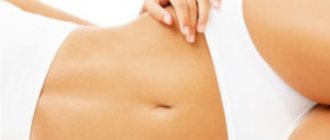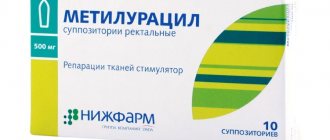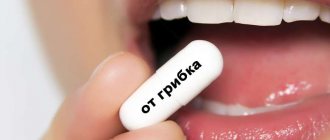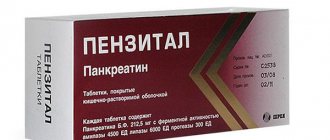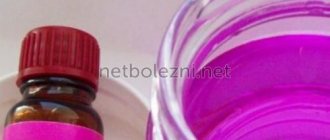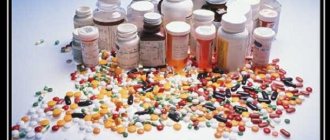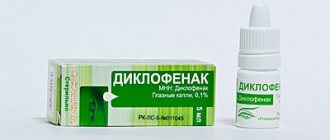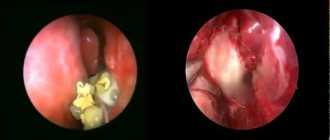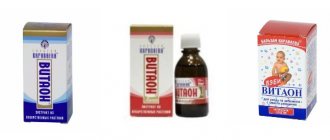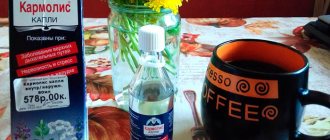Drugs for the treatment of sinus inflammation are chosen taking into account the symptoms and the presence of complications. In general, their action is aimed at cleansing the sinuses of secretions, relieving swelling, allergic manifestations, and destroying pathogenic flora. As well as diluting viscous mucus and its release, restoring the functioning of the ciliated epithelium.
How do these drops work?
Nasal drops for sinusitis, depending on their composition, perform the following functions:
- Fight infection and germs.
- Improves the outflow of pathological secretions.
- Helps restore normal functioning of the ciliated epithelium.
- They liquefy viscous mucus and help remove it out.
- Moisturizes and relieves symptoms.
- Constrict blood vessels and eliminate swelling.
Depending on the form and characteristics of the disease, the patient may be prescribed different groups of medications. Usually they try to choose the best remedies for the treatment of sinusitis, which act on several parts of the pathological process at once.
Mucolytics
Mucolytic agents for the sinuses are prescribed to thin the thick mucus formed due to lesions of the maxillary cavities.
| Name, country of origin | Description and action | Price from/to, rub. |
| Fluimucil – nasal, antibiotic, Spain | The active ingredient, acetylcysteine, activates the removal of viscous mucus and reduces its formation. | 270-310 |
| Mucodin - granules for the preparation of nasal suspension, Israel | The active ingredient, carbocisteine, stimulates the discharge of mucus, restores the functioning of secretory cells during chronic processes in the maxillary sinuses. | 220-285 |
Mucolytic drops and sprays are approved for use for no more than 5 days.
Which nasal drops are best for sinusitis?
There is no such thing as the best cure for sinusitis. In specific situations, individual people may need different groups of remedies.
So, some medications for the common cold can be used during pregnancy, others are suitable for children, and others are good for use in adults with exacerbations of the chronic form of the disease.
What is used for this disease:
- Vasoconstrictors.
- Hormonal.
- Antibacterial.
- Moisturizing.
- Mucolytics.
- Combined.
- Homeopathic.
In addition, you can take homemade medications or other traditional medicine methods. Let's take a closer look at each group of these drugs and dwell on their features.
Nasal drops for sinusitis with antibiotics: names
Antibacterial topical products effectively fight bacteria. They are preferred to be prescribed for purulent sinusitis, as well as for exacerbation of chronic forms of bacterial sinusitis.
What names are found in the pharmacy? These are: Polydexa, Isofra. Bioparox, which was widely prescribed in the past, has been withdrawn from sale.
Polydexa
Polydexa with phenylephrine is used in treatment. It contains two local antibiotics: Neomycin and Polymyxin, a hormone - Dexamethasone and a decongestant - Phenylephrine.
Thanks to this combined composition, it has antibacterial, anti-inflammatory and vasoconstrictor effects. Used for acute and chronic rhinitis, sinusitis, as well as for rhinopharyngitis in children and adults.
Contraindicated during pregnancy and in children under 2.5 years of age. Do not give to patients with glaucoma and allergies to its components.
The course of therapy takes a week. Children are prescribed 1 injection into each half 2-3 times a day. Adolescents over 15 years of age and adults: 1 injection 3-4 times a day.
Sometimes allergic reactions may develop that require discontinuation. It is not absorbed into the systemic circulation.
Important! Use with caution in professional athletes, since substances in Polydex can give a positive result in doping tests.
Isofra
Another drops for sinusitis and sinusitis with antibiotics, which include Framycetin (an aminoglycoside that acts on most bacteria). Used in a complex therapy scheme for the treatment of upper respiratory tract diseases.
The drug is contraindicated during pregnancy and lactation, as well as in children under 2 years of age. Do not prescribe if you are allergic to its components.
Isofra is prescribed 1 injection 4-5 times a day in adults and 2-3 times a day in children. The course should not exceed a week, so as not to develop bacterial resistance to this substance.
Drugs that help remove exudate and pus from the maxillary sinuses
The inflammatory process in the maxillary sinuses is very often accompanied by the accumulation of fluid in them. This may be exudate or pus, but in any case, every effort should be made to get rid of them.
To liquefy the pus in the sinuses, you need to drip into the nose drugs that have the ability to irritate the nerve endings located on the mucous membrane. This provokes increased mucus production, as a result of which the exudate is mechanically forced out of the sinuses, and the swelling subsides.
Which drops are better? There is no clear answer to this question, since they have completely different compositions.
The most effective drops against sinusitis, helping to liquefy and remove pus, are Sinuforte and Rinofluimucil.
The main active ingredient of Sinuforte drops is the juice of cyclamen tubers. The peculiarity of this drug is its effect only at the site of application, since it is not absorbed into the blood.
The duration of Sinuforte administration is determined by the doctor depending on the patient’s health condition. It is not advisable to exceed the recommended periods, because otherwise side effects may occur - increased salivation, lacrimation, burning.
Rinofluimucil has a good effect. This is a complex drug in the form of a spray, which contains acetylcysteine and tuaminoheptane. Rinofluimucil has antioxidant, anti-inflammatory and vasoconstrictor effects. The course of treatment generally lasts no more than 7 days, the required dosage is selected individually.
The product does not enter the systemic bloodstream, providing a therapeutic effect at the site of application and has virtually no contraindications for use. Of the side effects, patients mainly note dry mucous membranes and addiction. The occurrence of allergic reactions is possible.
For this disease, remedies are used that:
- constrict blood vessels, thereby reducing swelling and mucus secretion;
- relieve inflammation and swelling;
- disinfect the nasal cavity.
Vasoconstrictor drugs include: Sanorin and Nazivin (active ingredient - naphazoline nitrate), Nazol (oxymetazoline hydrochloride), Tizin (tetrahydrozoline hydrochloride), DlyaNos (xylometazoline hydrochloride). These medications come in the form of nasal spray and drops.
Their effect is almost the same, only occurs after a different period of time. For example, Nazol begins to act within 5-10 minutes, and its effect lasts up to 12 hours. Tizin nasal spray has a vasoconstrictor effect in 1-2 minutes and lasts for 6 hours.
Hormonal
They are traditionally chosen for allergic rhinitis, but they have also found their use in the treatment of sinusitis. They are prescribed in order to relieve swelling of the sinus outlet so that the pathological contents do not stagnate in it.
In addition, after 3-4 days they relieve swelling of the mucous membrane and facilitate nasal breathing. Their use is limited only by their cost; they are quite expensive, so not all patients can afford to purchase them for themselves. List of hormonal sprays:
- Nasonex. The active substance is the local hormone mometasone. This local glucocorticosteroid promotes an anti-inflammatory and anti-edematous effect, and its minimal dosage is not absorbed into the systemic circulation and does not affect the body as a whole. Approved for use by children from 2.5 years old, 1 dose once a day. Adverse reactions include burning and dryness, and rarely nosebleeds. For sinusitis, use for 2-3 weeks.
- Flixonase. The active ingredient is the glucocorticosteroid fluticasone. Has the same effects as similar drugs. Allowed for children over 5 years old.
- Avamis. It also contains fluticasone (a hormone). Take 1 dose once a day, usually in the morning. For adults and children over 4 years old.
Such sprays are well suited for treating exacerbations of a chronic process in conjunction with systemic medications. In the acute form, their effect appears after 3-4 days, the patient is already beginning to recover, so their prescription may be unjustified.
It is believed that these are “super drops for sinusitis and persistent runny nose” when decongestants cannot be used. Then this particular group is appointed.
Classification
Depending on the mechanism of action, drops used for sinusitis are:
- Vasoconstrictor drops. They are prescribed only for symptomatic therapy. They act on α-adrenergic receptors located on the nasal mucosa. This provokes vasoconstriction, reduction of swelling and congestion of the nasal passages, and restoration of nasal breathing. Relief of symptoms when using vasoconstrictors occurs a few minutes after instillation. But when using them, addiction develops very quickly. The effectiveness of their use decreases, the patient is forced to drip them more often, since without vasoconstrictor drops he can no longer breathe, and drug-induced rhinitis develops. A person can no longer do without drugs from this group.
- Antibiotic drops. They are used for sinusitis of bacterial etiology. If the disease is caused by viruses, then they are simply useless. When a patient has a fungal infection, they can trigger the progression of mycosis. Therefore, antibacterial agents can only be used as prescribed by a specialist. Drugs in this group are used not only to eliminate the symptoms of bacterial sinusitis, but also to treat it, since they act on the causative agents of the disease. If the infection is mild, then sometimes it is possible to defeat it only with the help of local dosage forms, without resorting to tablets and injections. Also, medications in this group are suitable for relieving exacerbations of chronic sinusitis. But you can’t often use drugs with antibiotics: microorganisms develop resistance to them.
- Moisturizers. They are represented by medicines based on sea water. These drugs have practically no restrictions on their use, except for the intolerance of their composition. They can be used in infants from the first days of life, pregnant and lactating patients. When used, mechanical cleansing of the nasal passages from allergens, pathogenic agents, and mucus is observed. They help to partially eliminate swelling and normalize breathing. Also, when using them, there is an increase in local immunity, which reduces the likelihood of the disease becoming chronic. Moisturizers can be used to cleanse the nasal passages so that other forms of drops can be introduced into them. But, unfortunately, they also do not eliminate the cause of sinusitis, but only facilitate its course.
- Allergy drops. As a rule, sinusitis of an allergic nature occurs in the maxillary or maxillary sinuses. Since they are the ones who are closer to the entrance to the nasal cavity and are more often exposed to various allergens than others. Drugs in this group act on H1-histamine receptors. For allergic sinusitis, nasal drops relieve nasal congestion, sneezing and itching in the nasal passages, and make breathing easier. But they also do not affect the cause of sinusitis, but only facilitate its course. To get rid of allergies, you need to identify what provokes the disease and then, as far as possible, eliminate contact with the allergen.
- Mucolytic agents in the nose. As a rule, with sinusitis, thick mucus is discharged from the nasal passages; mucolytics are used intranasally to thin it. They make nasal mucus more liquid, facilitate its separation from the nasal passages, and as a result restore nasal breathing.
- Glucocorticosteroids. They are usually used in the chronic form of the disease as an anti-inflammatory and decongestant. In the acute stage of the disease, they are prescribed only if severe swelling is observed. These drops are especially effective for sinusitis of an allergic nature.
- Herbal remedies. These nasal drops for sinusitis relieve inflammation and facilitate nasal breathing.
Which drops help best with sinusitis?
Often, at a doctor’s appointment, a person asks to be prescribed a drug that should instantly cure all the symptoms, and the disease will go away in one day. Unfortunately, it does not exist, and various remedies will be a good help with painful manifestations of pathology:
- For dryness and a profuse runny nose, you can use saline solutions (Salin, Aquamaris, etc.). They will not only moisturize the mucous membrane, but will also help remove all the snot.
- For purulent discharge, it is worth trying antibacterial ones.
- When a thick secretion has accumulated in the sinuses, mucolics will help They thin mucus and promote its removal.
- If the patient is not breathing at all, then decongestants will urgently save the situation .
- Homeopathic natural medicines are more suitable for children and pregnant women , as well as for those patients who refuse therapy for personal reasons.
Important! In some cases (block of the excretory anastomosis, development of complications), no remedy will help a person; in such situations, it is necessary to perform a puncture of the maxillary sinus and surgical intervention in this area.
Other treatments
Sinus evacuation. This method allows you to quickly clear the sinuses of purulent contents. It is used only when the disease is mild or moderate in severity.
The patient is placed on a couch, after which a catheter with a soft tip is inserted into one nostril, and a special suction device is inserted into the other. For washing, a furatsilin solution is used, which has disinfectant and antibacterial properties, which helps prevent the recurrence of infection.
To prevent the patient from choking during the procedure, he needs to constantly say the word “cuckoo” - this prevents the solution and pus from entering the respiratory tract.
Puncture (puncture) of the sinus. This method is surgical, since it is necessary to puncture the bone septum, which is located between the maxillary sinus and the nasal passage. The doctor pours a saline solution through a sterile needle to rinse the sinus cavity and remove purulent contents, which drain into a special container through the patient’s mouth.
Sinusitis is a dangerous and serious disease if it is not treated on time, as it can lead to the development of complications, including life-threatening ones (meningitis, accumulation of pus in the brain, etc.).
If an ENT doctor diagnoses a patient with sinusitis, you should take the prescribed treatment seriously and strictly follow all the specialist’s instructions. This will help avoid serious consequences and maintain health.
For more information about diagnosing and treating sinusitis, watch the video:
This article has been verified by a current qualified physician, Victoria Druzhikina, and can be considered a reliable source of information for site users.
Rate how helpful this article was
2.8 4 people voted, average rating 2.8
Did you like the article? Save it to your wall so you don’t lose it!
Drops for sinusitis in adults
Effective medications for inflammation in adults must include several components. In such cases, Polydexa will be an excellent solution, which will remove swelling and destroy bacteria.
Another well-known name is Rinofluimucil. It relieves swelling and thins thick mucus, allowing it to be cleared from the sinuses more quickly.
How is the pathology treated:
- First, the passages are washed with saline solutions to clean them of mucus, snot and pus.
- After this, in case of severe swelling, vasoconstrictors are dripped.
- When the nose begins to breathe, agents with an antibiotic or anti-inflammatory component are injected.
This multi-stage scheme helps to achieve the most effective action of the drugs. After all, the excretory anastomosis is deep and if the medicinal substance does not reach it, then the whole result will be reduced to zero. In these cases, sprays are more useful.
They deliver an aerosol under pressure, and the aerosol cloud reaches the most remote corners. On the pharmaceutical market, most of these drugs are presented in both drop and spray form.
Children's
For a young child, when choosing remedies for inflammation of the maxillary sinus, it is better to choose drops. A sudden hit of a jet of aerosol from a spray can cause laryngospasm in babies predisposed to it, so they are not given to children.
Most of them
are contraindicated for children under 2-3 years of age. However, at this age the likelihood of developing this disease is very low, because the final formation of the sinus occurs only by 3-4 years.
After 3 years, decongestants are used in children in special dosages (Nazol Baby and others), moisturizing solutions are allowed from birth, and hormonal sprays are prescribed after 3-4 years.
In children predisposed to allergies, medications based on natural ingredients (Pinosol, Sinuforte, etc.) are used with caution. This may cause a serious allergic reaction.
In childhood, parents love to use homemade preparations based on beets, carrots, aloe and other medicinal plants. In case of illness, such treatment is possible only in mild forms and after consultation with the doctor.
Complex nasal drops for sinusitis: composition
The best medications for this problem are those that have several effects at once.
What are the combined anti-sinusitis remedies:
- Polydexa. A combination of two antibiotics, a hormone and a decongestant. It is described in more detail in the chapter on antibacterial agents. Estimated cost 290-300 rubles.
- Rinofluimucil. This nasal spray contains the mucolytic acetylcysteine and the vasoconstrictor tuaminoheptane. It liquefies viscous snot and brings it out. Indicated for runny nose and sinusitis with thick, difficult to remove secretions. Prescribed to children and adults for a week. Its price is 240-250 rubles.
- Vibrocil. It includes vasoconstrictor and antiallergic components. It acts gently and quickly eliminates the symptoms of the disease, relieves swelling. Cost – 270-280 rubles.
- Snoop. Contains vasoconstrictor xylometazoline and sea water. Thanks to this structure, they do not dry out like most of this group. Approximate price – 90-100 rubles.
Technique for administering drops
To get the desired effect from the medicine, you need to learn how to put drops into your nose correctly:
- Before the procedure, the contents of the bottle are heated in a water bath to body temperature.
- Lie down or tilt your head on the side in which the injection will be made.
- Apply the required number of drops according to the instructions.
- Press the wing against the nasal septum and perform light massaging circular movements so that the solution is evenly distributed throughout the entire mucous membrane.
- Repeat the same, but on the other side.
The bottle nozzle is not inserted deeply so as not to damage the mucous membrane.
If the drug is presented in the form of a spray, then the sequence of the procedure is as follows:
- The tip is inserted into the nasal cavity, pointing it towards the lateral wall.
- Make one press.
- The wing is pressed against the septum and distributed over the surface of the mucosa with massaging movements.
You should not use drops against sinusitis more often or for longer than prescribed by your doctor. This can lead to a number of complications such as dryness, bleeding, atrophy, addiction, and allergic reactions.
Vasoconstrictor drops
The best drops to help with swelling are decongestants. Unfortunately, this is where the advantage of these drops ends. They are indispensable when you need to quickly relieve swelling and remove snot, but their side effects overshadow all the positive effects, so they must be used carefully.
There are three generations:
- Based on naphazoline (Sanorin, Naphthyzin). They work quickly after a minute, but the effect lasts only 2-3 hours. They often cause negative reactions, so they are rarely used.
- Based on xylometazoline (Otrivin, Galazolin, Xylene). The action lasts 6-8 hours. They work more softly compared to the first group.
- Based on oxymetazoline (Nazivin, Nazol, Noxprey). They cope with the manifestations of swelling and congestion for up to 12 hours, they act strongly, but gently.
Important! The latest generation is Tramazolin (trade name Lazolvan Rino). This is a spray with a pronounced effect and minimal side reactions.
Despite the rapid action of such drops, people should not forget about contraindications: blood pressure, glaucoma, heart disease, pregnancy and others. In addition, they often cause addiction and withdrawal symptoms, so they are not used for more than 7 days.
Antiseptic drugs
Antiseptics not only suppress bacterial infections, but also cope well with viruses and opportunistic fungal microflora.
One of the most common remedies is furatsilin; it rightfully occupies a leading position among antiseptics due to its high efficiency and low price. But besides it, there are other drugs that can be a good alternative. These include Miramistin, Protargol, Octenisept and drops of black cumin oil.
By using antiseptic drops in the nose for sinusitis, you can be sure that they will not cause addiction. Such drugs are absolutely safe for internal organs and work well in acute forms of the disease. The active substances suppress the source of the disease, which simplifies the restoration of normal functioning of the nasopharynx.
Immunomodulatory drugs
The main effect of immunomodulatory agents is aimed at activating the internal forces of the body, producing antibodies, and restoring the functioning of interferon. In addition to fighting viruses, they develop the body's resistance to infections, thereby minimizing the possibility of reoccurrence of the disease.
The most effective drugs in this category are Derinat and Nazoferon. The active substances of derinat affect human cellular and humoral immunity. Once in the body, they are metabolized and then partially excreted.
Nazoferon drops have immunomodulatory, antiviral and anti-inflammatory effects. They inhibit the replication of viruses and also protect the body from infectious agents.
Also, as a preventive measure, doctors recommend taking Broncho-munal, which contains a set of weakened bacteria and acts as a vaccine against sinusitis and other infectious diseases.
Disease prevention
Measures to prevent this type of disease involve the following measures to solve this problem:
- Constant observance of the rules of personal hygiene of the nasal cavity.
- Sports and physical education.
- Warm yourself before going out into cold air and regularly wear a hat.
- Eliminating the possibility of patient infection with infectious diseases.
- Compliance with instructions for maintaining a healthy lifestyle.
- Timely prescribed and carried out treatment of the disease.
- Completing preventive medical examinations at a given time.
- Compliance with the rules of proper care of the nasal and oral cavity.
Cheap drops for sinusitis
Sometimes the criterion for choosing a medicine for a pathology is its price. How to choose good but inexpensive drugs in these cases? It is necessary to take into account the result that the patient wants to get and pay attention not to the original drug, but to generics.
Attention. A generic is a medicine developed on the basis of the original one, which repeats its composition and action.
Manufacturers of generic drugs do not spend money on clinical studies, but buy ready-made ones from the original, so their price with the same ingredients is much lower.
The table below will help you navigate the prices of medications for sinusitis and choose an affordable option for yourself.
| Name | Effects | Price |
| Naphthyzin | Constricts blood vessels, relieves symptoms | 15-45 |
| Knoxspray | Eliminates congestion, swelling and snot | 55-60 |
| Isofra | Antibacterial, destroys germs | 315-340 |
| Polydexa | Combined: destroy bacteria, constrict blood vessels, relieve swelling | 290-300 |
| Aquamaris | Moisturizes and cleanses | 170-200 |
| Nasonex | Hormonal, reduce swelling | 500-600 |
| Flixonase | Local hormone relieves swelling | 480-520 |
| Sinuforte | Local irritant with cyclamen | 2300-2400 |
| Pinosol | Plant-based with essential oils, remove puffiness | 170-230 |
Drops with cyclamen
Medicines based on cyclamen for sinusitis have a number of unique properties. They irritate the nerve receptors of the mucous membrane and thereby increase the secretion of mucus.
The reaction begins 1-2 minutes after exposure and lasts up to 2-3 hours. Such stimulation helps remove pathological secretions from the sinus and cleanse it.
What cyclamen drops are available in pharmacies:
- Sinuforte (cyclamen extract). Used for sinusitis, polyps, rhinitis and other problems accompanied by snot. Spray on the mucous membrane after which the patient feels a burning sensation, lacrimation and salivation. Your face may turn red and you may experience a short-term headache. You should not pay attention to this and continue treatment.
- Neonox. They are with cyclamen extract. Prescribed to adults and adolescents over 12 years of age. Do not use for more than 7-10 days.
conclusions
A headache with sinusitis occurs when the nasal mucosa swells and prevents the resulting pus from leaving the maxillary sinuses. To cure a headache, you must treat the cause itself - sinusitis. This disease is treated with medications. Their choice is quite large and the doctor attributes them mainly in combination. There are also several folk methods and remedies that will help alleviate suffering. But with this disease, self-medication is unacceptable. Too serious complications. Therefore, at the first symptoms you should consult a doctor. Also, do not forget to carry out timely prevention to avoid its transition to the chronic stage.
Drops with mumiyo and glycerin
Mumiyo
This is a well-known folk remedy that is used in alternative medicine. The active ingredients have bactericidal properties, relieve inflammation, relieve pain and promote healing.
How to prepare them: mix water, glycerin and mumiyo in equal proportions. Add a couple of drops of any moisturizing oil (jojoba, olive, grape seed) to the resulting mixture for additional softening.
Drip a whole pipette 3-4 times a day. They work well in chronic forms and can be used for up to 2-3 months. In addition to them, extracts from beets, carrots and cabbage leaf juice are chosen for children.
Chinese
In the pharmacy you can find several Chinese-made medicines made from natural herbs of this area. They help fight runny nose and inflammation, and also relieve cold and flu symptoms.
Made according to traditional recipes of Chinese healers, such drugs can be a salvation for chronic forms. A representative of this group is the medicine “Yansuan naijiazuolin di bi ye”. Before using them, you should consult a doctor, especially if the patient has a tendency to allergies.
Homeopathic
Medicines made from extracts and oils of medicinal plants work well in the complex therapy of all types of sinusitis. List of the most famous representatives of this group:
- Pinosol. Contains pine oil, eucalyptus, peppermint and other components. They act gently, but weaker than synthetic analogues. Allowed during pregnancy and lactation.
- Euphorbium compositum. A complex of medicinal plants that works well for chronic sinusitis.
- Delufen. It includes mustard, spurge, luffa, etc., and is used for local treatment of diseases.
Another well-known remedy for the treatment of maxillary sinusitis is Sinupret . Sinupret is not dripped into the nose, it is taken orally with water.
It is an alcohol infusion of medicinal herbs such as verbena, sorrel, primrose, gentian, etc. It is used for purulent processes with viscous secretions. If necessary, this herbal mucolytic can be replaced with synthetic analogues: ACC (acetylcysteine), Bromhexine, or Lazolvan.
Various local remedies are used in the treatment of sinusitis. The key to a successful recovery will be choosing the right medications and following the doctor’s recommendations for their use.
Oily
Oil-based drops cover the mucous surface of the nasal passages with a thin layer, preventing them from drying out, reducing the rate of spread of infections, and eliminating the irritating effect of the mucus that forms.
For these types of preparations to work effectively, they need to be sprayed at night.
| Name, country of origin | Active substance, nature of action | Price from/to, rub. |
| Vitaon – balm for preparing drops, Russia | Contains oils of chamomile, rosehip, wormwood, thyme, caraway, and pine. It has an antiseptic, antibacterial mild effect on the nasal mucosa, reduces the intensity of the inflammatory process in bacterial (non-purulent) sinusitis. | 145-185 |
| Tizin xylo – nasal drops, France | The active substance - xylometazoline hydrochloride - eliminates irritation of the walls of the nasopharynx, its drying out, and chronic dryness syndrome. Suitable for symptomatic relief of traumatic, allergic, infectious sinusitis. | 98-130 |
Can be used for children from the age of 6 years; it is contraindicated for dry inflammation of the inner nasal membrane with the formation of a crust.
How to bury it correctly?
Before using any drops, first of all, you must get rid of the mucus in the nasopharynx. To do this, you need to rinse your nose with a weak salt solution, or use sprays such as Dolphin or Aqualor.
Only after this can vasoconstrictor medications be instilled, and after them antibacterial or other medications. Basic Rules:
- Do not throw your head back and instill drugs while standing
- Use them while lying on the bed. Turn on your side and bury it in the nostril, which is located below. After a few minutes, turn to the other side and repeat the procedure.
Self-medication is not always useful!
Only a doctor who constantly monitors the patient should decide which drops to treat sinusitis. Otolaryngologists have developed several useful tips on the use of medications of this type:
- There is no need to use the drops for more than six days. According to doctors, they are addictive if used longer than the specified time.
- You should never treat a disease yourself. Even anti-head medications are not a panacea. Only under the supervision of an experienced specialist can you get rid of the disease and avoid chronicity of the process.
- Antibiotic treatment should not be abandoned. Many people are afraid of this method, but practice shows that in many cases the use of antimicrobial drugs has saved the majority of patients from surgery.
What is most effective?
Current medical practice establishes that the most effective treatments for this disease are those containing local antibiotics.
Drugs such as Isofra and Polydexa can qualitatively influence the course of the disease and improve the clinical picture in a short time.
In addition, it is expected to enhance the effectiveness of the use of this type of drug by streamlining the use of the medication according to the existing instructions for its purpose.
Reviews
My child caught a cold, and the first thing I did was run to the pharmacy. The pharmacist recommended Isofra drops. They come with an antibiotic. They did not help my child with congestion.
After some time, I learned that the drug helps cope with bacteria in acute respiratory viral infections, and is effective for sinusitis. The color of nasal discharge plays a big role here. Ours were transparent.
Most likely, we picked up some kind of virus for which antibiotics do not help. If we had green discharge, this would indicate the presence of bacteria. In this case, I think Isofra would help.
Olga, 35 years old
I recently had sinusitis for the first time and didn’t recognize it right away. The doctor included Nazivin nasal drops in the course of treatment. I remembered that they treated our child with it when he was still breastfed.
Even then I liked this drug. I was cured within a week. By the way, I would like to highlight a huge advantage of the drug – its cost.
Medicines for sinusitis are expensive. But I think why overpay if there are cheaper drops that work just as effectively.
Oleg, 29 years old
I would like to share my impression of taking Sinuforte drops. In my opinion, this is the most powerful medicine for sinusitis. It is unique and does not have any drops with a similar composition.
They are expensive, but worth it. This is not the first time I have been sick, and I have previously tried many nasal drops. I have something to compare with. No drug treats as effectively as Sinuforte.
Before use, you must carefully read the instructions in order to properly prepare the solution. The action of the drops begins within a minute after use. After prolonged sneezing, excess mucus comes out and it becomes easier to breathe.
Yulia, 42 years old
My sinusitis began to develop and the nasal drops that the doctor prescribed did not help. As a result, I had to get a puncture, which I didn’t want. While searching for some other therapeutic methods on the Internet, I came across Sinuforte drops.
The drug had many positive reviews and recommendations that it could become an alternative to punctures. The only thing that bothered me was the high cost of the medicine.
But health is more important and I decided to try this drug. After the first dose, I began to breathe easier. I was completely cured after 10 days and was able to avoid a puncture.
Natalya, 31 years old
My daughter recently suffered from sinusitis. We were treated with Polydex drops. They recovered in a few days. The cost is average, there are few contraindications. We liked.
Tatyana, 45 years old
